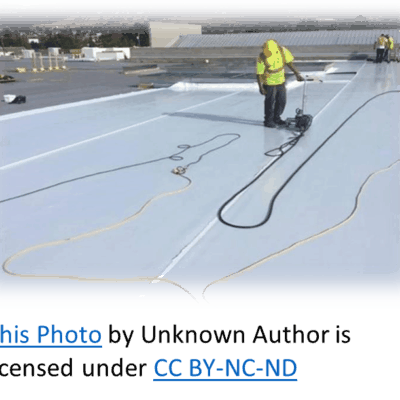Torching and welding safety talk
When doing torching or welding activities on a commercial roof, employees should have working knowledge about equipment, housekeeping practices, as well as fire prevention.
Torching and welding equipment:
- Ensure safety relief valves on cylinders remain unobstructed
- When not in use a safety plug should be in place for each cylinder valve
- Inspect all compressed cylinders for defects before use and always secure to prevent tipping
- Place torch and hand held welders on stand when not in use
- Inspect all hoses to check for any wear or tearing before use
- A regulator should be used any time torch or welding equipment is being used and all connectors should be leak tested before use
- Light torches with a spark lighter not with cigarette lighters or matches
- Do not leave torch connected to the cylinder when finished using
- Use walk behind welders when possible over handheld to reduce strain
Fire prevention:
- Know the expectations of the company emergency preparedness plan and follow them if a fire occurs
- All rooftop mechanical equipment should be disconnected and removed prior to these activities
- A charged fire extinguisher should be within easy access during these activities
- Good housekeeping practices should be maintained on the jobsite with debris and flammables removed before beginning
- Natural gas service lines should be removed prior to torching; be alert to natural gas odor
- Shut down all rooftop mechanical units and remove filters as they pose a fire hazard
- Only torch areas that can be seen and never leave a torch lit unattended
- Gussets should be applied at internal and external corners to prevent flame penetration
Protective clothing:
- Long sleeve shirts and pants as well as work boots should be worn made from non-synthetic materials; clothing should be made of wool or cotton
- Wear leather work gloves with sleeves overlapping them
- Safety glasses should be worn as well

